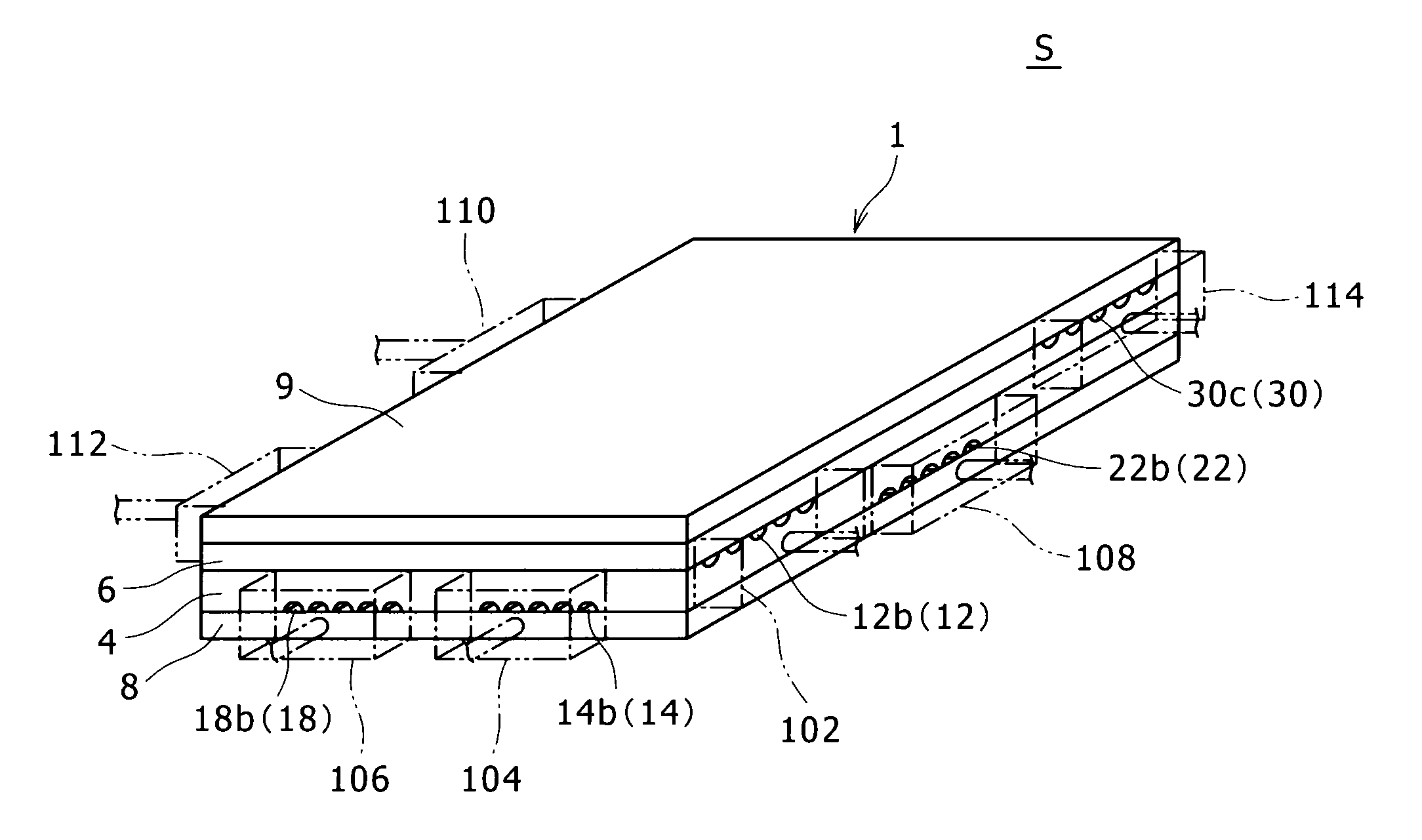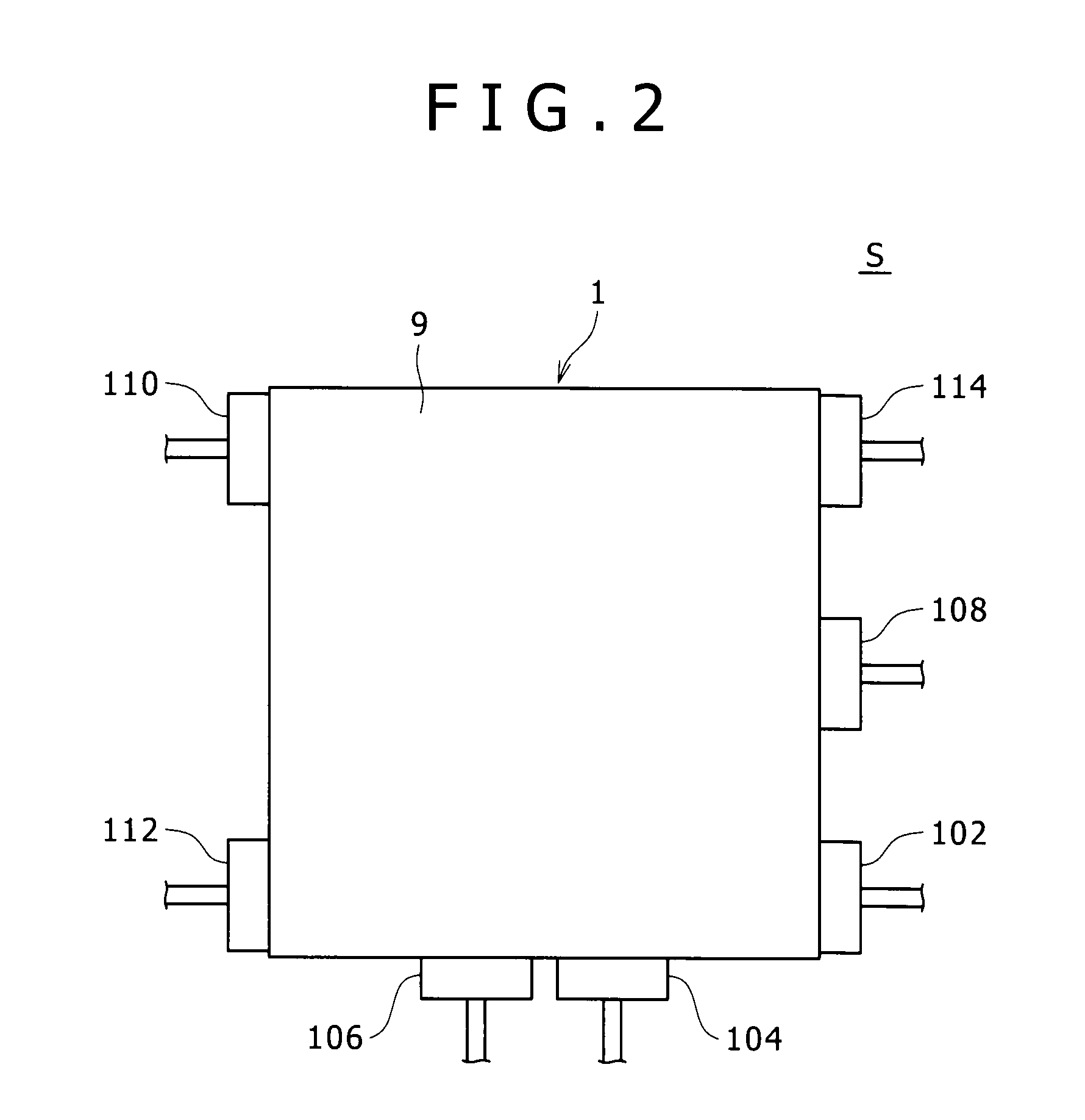Flow channel structure, and mixing method, extraction method, and reaction method for fluids
a flow channel and flow channel technology, applied in solvent extraction, separation processes, transportation and packaging, etc., can solve the problems of reducing the reaction speed of the first fluid, the inability to synchronize the flow quantity of the second fluid and the flow quantity of the inability to mix the second fluid with the first fluid on each of the mixture stages. , to achieve the effect of reducing the average pressure loss in the main channel, increasing reaction efficiency, and reducing the average pressure loss
- Summary
- Abstract
- Description
- Claims
- Application Information
AI Technical Summary
Benefits of technology
Problems solved by technology
Method used
Image
Examples
first example
[0062]A description will now be given of an extraction method employing the flow channel structure 1 as a first example of the present invention.
[0063]A fluid subject to extraction containing an extract is introduced into the main channels 12 of the flow channel structure 1 in this extraction method. The fluid subject to extraction is a liquid. The fluid subject to extraction introduced into the main channels 12 flows downstream through the main channels 12.
[0064]On the other hand, an extraction medium, which is a fluid for extracting the extract from the fluid subject to extraction, is introduced to each of the sub channels 14, 18, 22 of the flow channel structure 1. The same type of extraction medium is introduced into each of the sub channels 14, 18, 22 on this occasion. Quantities of 30% of the required quantity of the extraction medium required for extracting the entire extract from the fluid subject to extraction are respectively introduced into the first sub channels 14 and t...
second example
[0074]A description will now be given of a reaction method employing the flow channel structure 1 as a second example of the present invention.
[0075]This reaction method introduces a first reactant to the main channels 12 of the flow channel structure 1 from the main channel inlets 12b thereof. The first reactant introduced into the main channels 12 flows downstream through the main channels 12.
[0076]On the other hand, a second reactant is introduced respectively into the sub channels 14, 18, 22 of the flow channel structure 1 in order for a chemical reaction with the first reactant. Different types of second reactant may be introduced respectively into the sub channels 14, 18, 22 on this occasion. Moreover, predetermined quantities of the same type of second reactant may be distributed and introduced into the sub channels 14, 18, 22 respectively. Moreover, predetermined flow quantities of the same type of second reactant may be distributed to and introduced into two sub channels ou...
PUM
 Login to View More
Login to View More Abstract
Description
Claims
Application Information
 Login to View More
Login to View More - R&D
- Intellectual Property
- Life Sciences
- Materials
- Tech Scout
- Unparalleled Data Quality
- Higher Quality Content
- 60% Fewer Hallucinations
Browse by: Latest US Patents, China's latest patents, Technical Efficacy Thesaurus, Application Domain, Technology Topic, Popular Technical Reports.
© 2025 PatSnap. All rights reserved.Legal|Privacy policy|Modern Slavery Act Transparency Statement|Sitemap|About US| Contact US: help@patsnap.com



